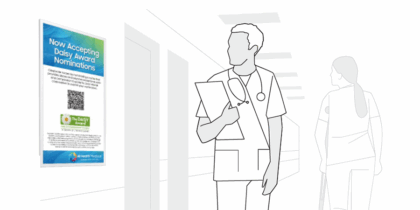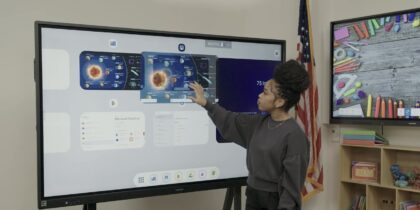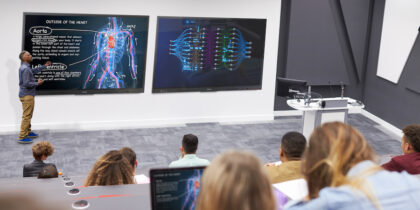Ubiquitous connectivity and steady streams of relevant, real-time online data are changing the game for out-of-home advertising companies and brands.
The old way of doing things involved companies conceiving and planning marketing campaigns weeks and months in advance, and then finding billboard and poster locations where a lot of people would see their printed message, but with the understanding that only a percentage of passersby would find that message relevant and timely.
But today, brands are creating sophisticated, highly targeted and relevant marketing campaigns using data visualization and digital signage.
General Motors Raises the Bar
General Motors is marketing its Chevy Malibu using a clever mashup of cameras, pattern-detection software and digital billboards to tell commuters that they too should be driving Malibus.
A camera and networked computer mounted up the roadway from the billboard scans oncoming cars, looking for the unique geometry of vehicle grilles that compete in the Malibu’s category. When the pattern-seeking algorithm gets a hit, it provides via mobile Internet a data trigger to the networked computer that drives content on the billboard up the road — telling it to play a specific ad directed at that car.
So, a motorist driving toward the billboard in a competing car could see a message that suggests, as one example, that there are “more available safety features (on the Malibu) than your Hyundai Sonata.”
Instead of a billboard using a generic message and trying to reach a percentage of the motorists who might one day buy a Malibu, real-time data hypertargets the crowd that drives cars similar to Malibus, and are the most likely to switch. The messages are almost personal, but stop well short of being invasive or creepy.
Targeted Advertising for Air Travelers
Heathrow Express is an aptly named passenger rail service that runs arriving passengers from London’s Heathrow Airport into the heart of the UK capital in a matter of minutes. Digital out-of-home advertising screens mounted at the baggage carousels in arrivals were used to hypertarget the service’s most likely customers, and then tell them precisely why they should take the train and not a cab or the Tube.
Using real-time data on traffic conditions, weather and schedules, digital screens matter-of-factly informed passengers waiting for their bags that if they took a taxi, it would take forever and cost a lot of money. Comparison data on the screens made it obvious that taking the express train was much more affordable, and would get them into London in half the time. Not surprisingly, the campaign was very successful, and won awards for its creativity and execution.
In another very different campaign near Heathrow, British Airways used flight tracker data from airplane transponders to show a child on a digital billboard watching and pointing at a real jet taking off or landing beyond the billboard, showing in text the flight number and destination or origin.
The Internet of Things and big data platforms enable developers to push the boundaries in advertising by making much more data readily available and easy to use for campaigns.
Another emerging media form, data visualization, uses this real-time and archival data to tell stories that influence consumer decisions in new and interesting ways — changing flat, printed infographics into dynamic and lively images.
The Capabilities of Digital Signage
The ad industry is not, however, changing just because of data, content and delivery systems like mobile Internet. Display technology advances are making it possible to put screens in new places and directly connect them to online data.
Daylight-readable LCD displays — illuminated inside by efficient LEDs — on sidewalks and shop windows attract consumers and help businesses stand out. Even in full sunlight, Samsung’s 2,500 nit displays can cut through daylight glare. Samsung and its subsidiary Prismview also have new direct-view LED displays that easily win the glare battle with sunlight, and have LED lights that save energy and deliver sharp images.
Digital out-of-home advertising signage has traditionally been driven by external PC media players, but a new breed of commercial LCD displays — spanning the full spectrum of sizes — ships with embedded media players. Smart Signage displays build in the connectivity, storage and processing power to drive content to the screens. They streamline the size and bulk of digital signage setups, and reduce costs and cables by removing the need for external playback devices.
For example, a digital out-of-home advertising (or OOH) screen in a busy airport would need nothing more than a power cord and Wi-Fi access to start pulling and displaying real-time data incorporated into ads and other messages.
The future of digital OOH and public messaging is all about smart messaging that uses stored and real-time data to deliver increasingly relevant and timely messaging to consumers. Marketers are happier when they know they’re reaching the right people with the right messages, and consumers are more receptive to messages that reflect their interests and lifestyles.
Find a digital display that fits your business needs on Samsung’s digital signage solutions page.







